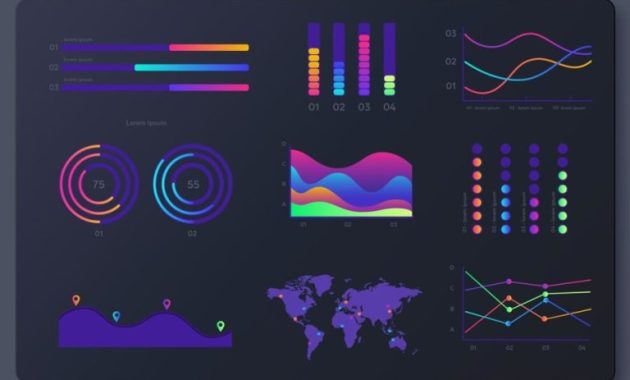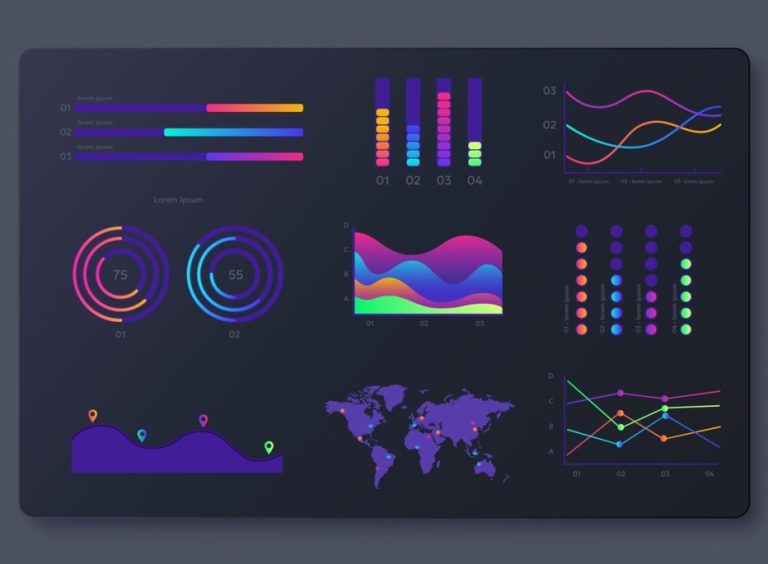
Harnessing the Power: The Best Business Intelligence Tools for Renewables
The renewable energy sector is booming. It is experiencing unprecedented growth. This expansion brings with it a flood of data. Understanding this data is critical for success. That’s where Business Intelligence (BI) tools come in. They transform raw data into actionable insights. This article explores the best business intelligence tools for renewables. It details how these tools empower businesses in this dynamic sector.
The Data Deluge: Why BI is Crucial
The renewable energy industry generates vast amounts of data. This includes data from solar farms, wind turbines, and hydro plants. It also includes data related to energy consumption, grid performance, and market trends. Analyzing this data manually is impossible. Traditional methods are slow and inefficient. Business Intelligence tools offer a solution. They automate data collection, analysis, and reporting. This enables informed decision-making. They help optimize operations, improve profitability, and drive innovation.
Key Features to Look For in BI Tools for Renewables
Selecting the right BI tool requires careful consideration. Several key features are essential. These features ensure the tool meets the specific needs of the renewable energy sector:
- Data Integration Capabilities: The tool must integrate with various data sources. These include SCADA systems, weather data providers, and market databases.
- Advanced Analytics: Look for tools that offer predictive analytics. These help forecast energy production, demand, and market prices.
- Real-time Monitoring: Real-time data visualization is crucial. This allows for immediate identification of issues and performance optimization.
- Customizable Dashboards: Dashboards should be customizable. They should allow users to track key performance indicators (KPIs). These KPIs include energy output, downtime, and revenue.
- Reporting and Automation: The ability to generate automated reports is valuable. These reports can be scheduled and distributed to stakeholders.
- Scalability: The tool should be able to handle increasing data volumes. This is essential as the business grows.
- User-Friendly Interface: The tool should be easy to use. It should be accessible to users with varying technical skills.
Top Contenders: Best Business Intelligence Tools for Renewables
Tableau
Tableau is a leading BI tool. It is known for its intuitive interface and powerful visualization capabilities. Tableau allows users to create interactive dashboards. These dashboards provide real-time insights. It integrates with numerous data sources. This makes it ideal for the renewable energy sector. Tableau excels at data discovery. It provides robust data governance features. Its scalability makes it suitable for businesses of all sizes. Tableau is a strong contender for the best business intelligence tools for renewables.
Microsoft Power BI
Microsoft Power BI is another popular choice. It offers a comprehensive suite of BI features. Power BI integrates seamlessly with Microsoft products. This makes it easy for users already familiar with the Microsoft ecosystem. It provides powerful data modeling and analysis tools. Power BI is cost-effective. It is a great option for businesses of all sizes. Power BI is frequently cited as one of the best business intelligence tools for renewables.
Qlik Sense
Qlik Sense offers a unique associative data modeling engine. This allows users to explore data relationships. It provides powerful data discovery and visualization capabilities. Qlik Sense is known for its ease of use. It offers a user-friendly interface. Qlik Sense is a good choice for businesses looking for advanced analytics. It is considered one of the best business intelligence tools for renewables.
Sisense
Sisense is a BI platform designed for complex data analysis. It excels at handling large datasets. Sisense offers a robust set of features. These include data preparation, visualization, and reporting. It is often used by large enterprises. They need to analyze massive amounts of data. Sisense is a viable option among the best business intelligence tools for renewables.
Looker (Google Cloud)
Looker, now part of Google Cloud, is a modern BI platform. It is designed for data-driven decision-making. Looker offers a flexible data modeling layer. It allows users to define business metrics. These metrics are used consistently across the organization. Looker integrates well with Google Cloud services. It is a good choice for businesses already using Google Cloud. It is considered one of the best business intelligence tools for renewables.
Real-World Applications: How BI Transforms Renewables
BI tools are transforming the renewable energy sector. Here are some specific examples:
- Predictive Maintenance: BI tools can analyze sensor data from wind turbines. This helps predict equipment failures. This reduces downtime. It improves operational efficiency.
- Energy Production Optimization: BI tools analyze weather data. They also analyze grid demand. This helps optimize energy production. This maximizes revenue.
- Performance Monitoring: BI tools provide real-time dashboards. These dashboards monitor the performance of solar farms. They monitor the performance of wind farms. This enables quick identification of issues. This ensures optimal energy output.
- Market Analysis: BI tools analyze market data. This helps businesses identify opportunities. They also identify risks. They optimize energy trading strategies.
- Customer Insights: BI tools analyze customer data. This helps businesses understand energy consumption patterns. They can also tailor their offerings to meet customer needs.
Implementation Strategies: Getting Started with BI
Implementing BI tools requires a strategic approach. Here are some key steps:
- Define Your Goals: Clearly define your business objectives. Determine what you want to achieve with BI.
- Assess Your Data: Identify your data sources. Evaluate the quality and availability of your data.
- Choose the Right Tool: Select a BI tool. Choose one that meets your specific needs. Consider the features, scalability, and cost.
- Develop a Data Strategy: Create a plan for data collection, storage, and management.
- Implement and Integrate: Implement the BI tool. Integrate it with your data sources.
- Train Your Team: Train your team. Teach them how to use the BI tool effectively.
- Monitor and Optimize: Continuously monitor the performance of the BI tool. Optimize it to ensure it meets your evolving needs.
Future Trends: The Evolving Role of BI in Renewables
The role of BI in the renewable energy sector is constantly evolving. Several trends are shaping the future:
- Artificial Intelligence (AI) and Machine Learning (ML): AI and ML are becoming increasingly integrated with BI tools. These technologies enable more advanced analytics. They also enable predictive capabilities.
- Edge Computing: Edge computing enables real-time data processing. This is closer to the source. This improves the speed and efficiency of data analysis.
- Data Democratization: BI tools are becoming more accessible. They are enabling more users to access and analyze data.
- Cloud-Based BI: Cloud-based BI solutions are gaining popularity. They offer scalability and flexibility.
The best business intelligence tools for renewables are becoming crucial. They will continue to evolve. They will adapt to the changing needs of the industry.
Conclusion: Embracing Data for a Sustainable Future
The renewable energy sector is poised for continued growth. Business Intelligence tools are essential for success. They empower businesses to make data-driven decisions. They optimize operations. They drive innovation. Selecting the right BI tool is an important step. It allows businesses to harness the power of data. This leads to a more sustainable future. By leveraging the best business intelligence tools for renewables, companies can thrive. They can contribute to the global energy transition. They can shape a greener tomorrow.
[See also: Related Article Titles]

